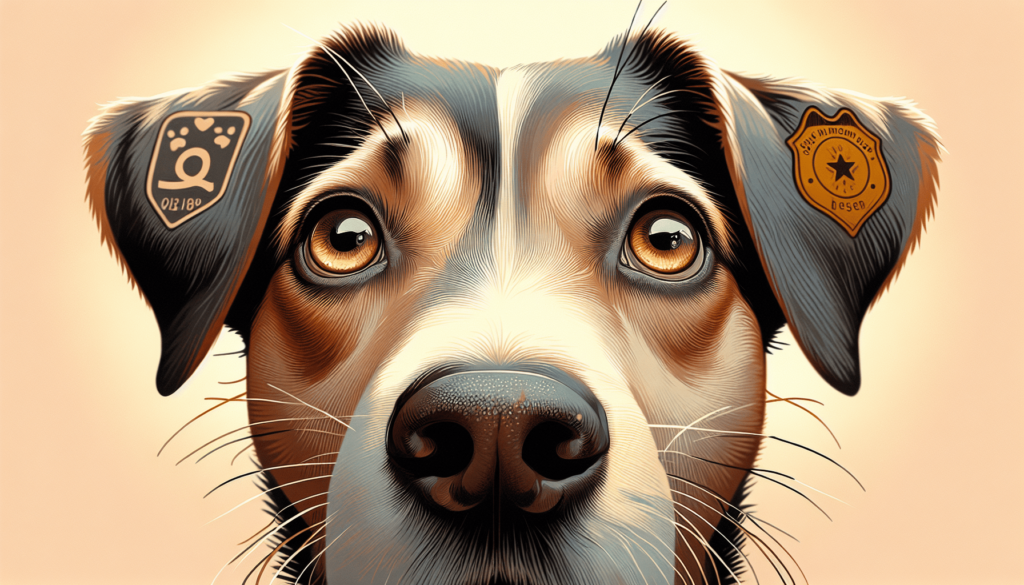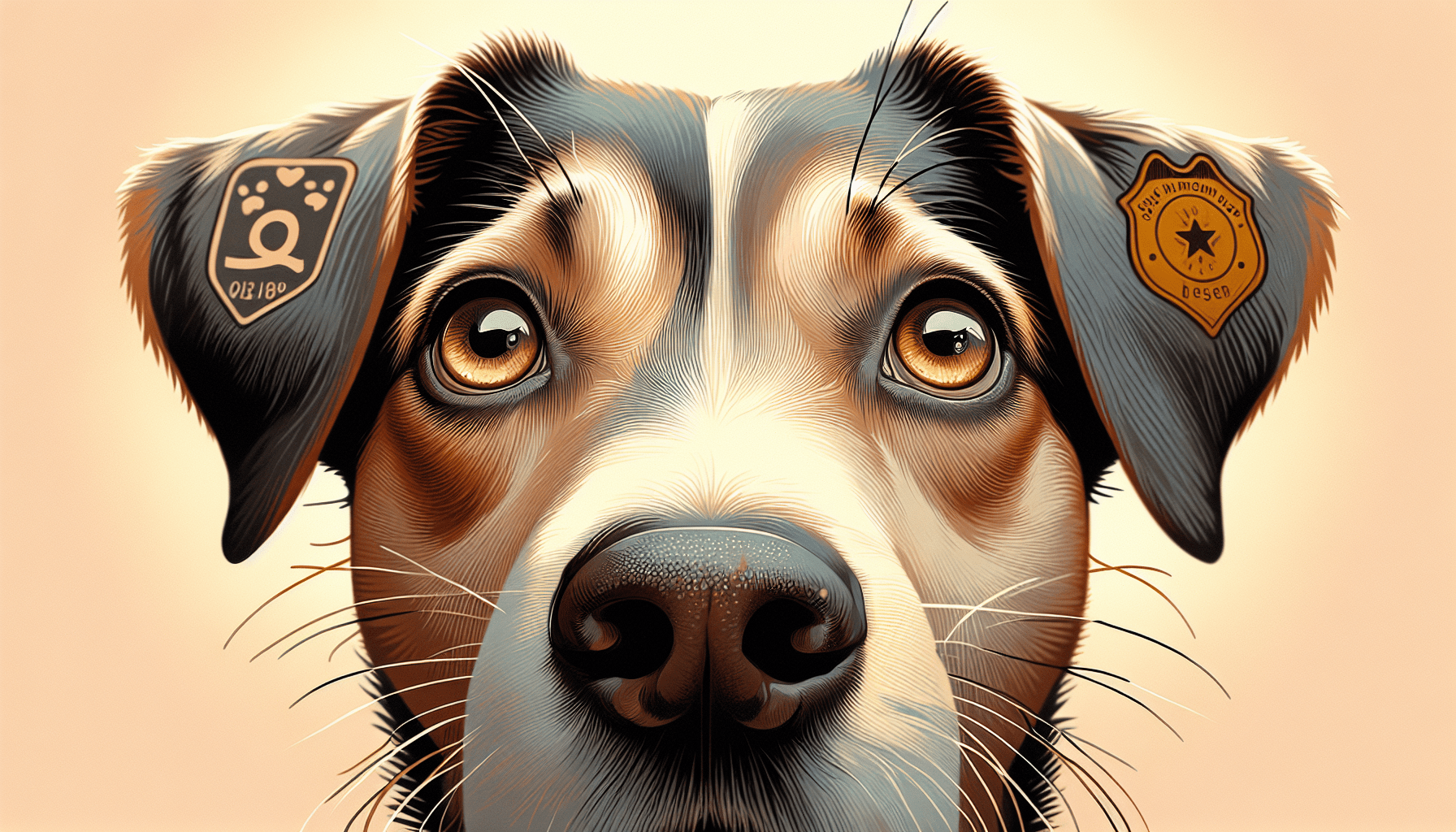Have you ever wondered what your furry friend is trying to tell you? Understanding dog body language and expressions is key to building a strong bond with your canine companion. In this guide, we will explore the intricate world of dog communication, decoding their wagging tails, perked ears, and playful barks. By becoming familiar with their subtle cues and signals, you’ll gain valuable insights into your dog’s emotions and needs, leading to a happier and more harmonious relationship. So, let’s embark on this journey of discovery and learn to speak the universal language of dogs!

Understanding Dog Body Language
Importance of understanding dog body language
Understanding dog body language is crucial for any dog owner or anyone who interacts with dogs regularly. Dogs primarily rely on their body language to communicate their feelings, emotions, and intentions. By learning to understand their non-verbal cues, you can better meet their needs, establish trust, and prevent potential conflicts or misunderstandings. Additionally, being able to comprehend your dog’s body language can also help you recognize signs of stress, anxiety, or discomfort, allowing you to address these issues promptly and effectively.
How dogs communicate through body language
Dogs are highly expressive animals that rely on a combination of body postures, facial expressions, vocalizations, and tail movements to communicate their thoughts and emotions. Unlike humans, who primarily communicate through verbal means, dogs use non-verbal cues to convey their messages. By observing and interpreting their body language, you can gain valuable insights into how a dog is feeling, whether they are happy, anxious, fearful, dominant, or submissive.
Common body language signals in dogs
Dogs use a variety of body language signals to communicate their emotions and intentions. These signals can include facial expressions, tail movements, posture, and vocalizations. Recognizing and interpreting these signals correctly can help you understand your dog’s state of mind and respond appropriately.
Facial Expressions
Eyes
A dog’s eyes can reveal a lot about their emotions. Wide-open eyes, with dilated pupils, often indicate fear or arousal. On the other hand, relaxed, soft eyes typically signify a calm and content dog. Direct intense staring, especially with a fixed gaze, may indicate a confrontational or aggressive posture.
Ears
The position and movement of a dog’s ears can provide valuable information about their mood. Erect ears held forward generally indicate alertness and interest, while flattened or backward ears often suggest fear, submission, or aggression. Some dogs may also exhibit a middle ground, with partially erect or slightly tilted ears showing curiosity or uncertainty.
Mouth and lips
A dog’s mouth and lips can convey different messages depending on their position and movements. A relaxed, slightly open mouth and loose lips generally indicate a calm and content dog. Bared teeth, with or without growling, suggest aggression or defensiveness. Lip licking or yawning can be signs of anxiety or stress, while a closed or tight-lipped mouth may indicate discomfort or tension.
Tail Language
Position
A dog’s tail position can reveal important information about their emotional state. A relaxed, neutral tail position signifies a calm and content dog. A tail held high and wagging freely usually indicates confidence and happiness. Conversely, a lowered or tucked tail suggests fear, anxiety, or submission. A raised tail held stiffly or between the legs may indicate aggression or defensiveness.
Speed
The speed of a dog’s tail wag can provide insights into their overall mood. A fast, wide wag usually signifies excitement, happiness, or friendliness. A slow, low wag may indicate caution or uncertainty. A rapid, stiff tail wag, especially combined with raised hackles and a hard stare, may signal aggression or a warning.
Wagging patterns
The direction of a dog’s tail wag can also convey important messages. A wag to the right is often associated with positive emotions, indicating a friendly and approachable demeanor. Conversely, a wag to the left may suggest negative or conflicted emotions, signaling caution or potential aggression. It is important to consider the overall context and other body language signals when interpreting tail wagging patterns.
Posture and Stance
Relaxed and friendly posture
A relaxed and friendly dog typically exhibits an open and loose posture. This includes a neutral or slightly forward-leaning stance, with a relaxed body, loose limbs, and a wagging tail. The dog may make gentle, playful movements, showing a willingness to engage and interact. Relaxed facial features, such as soft eyes, an open mouth, and slightly forward ears, also indicate a positive and approachable demeanor.
Fearful or anxious posture
A dog in fear or anxiety often displays a combination of body language signals. The body may appear tense or stiff, with lowered or tucked tail, backward ears, and a crouched or hunched posture. The dog may show signs of avoidance or withdrawal, such as turning away, hiding, or attempting to make themselves appear smaller. Avoiding eye contact, panting, lip licking, or yawning are also common signals of anxiety in dogs.
Aggressive or defensive posture
An aggressive or defensive dog will display clear body language signals to communicate their intentions. They may hold their body rigidly, with raised hackles, forward-leaning stance, and a fixed or intense stare. The tail may be held high and stiff or tucked tightly between the legs. The ears may be forward or flattened against the head. Growling, baring teeth, or snapping are additional signs of aggression or defensiveness.

Vocalizations
Barking
Barking is an important vocalization for dogs and can convey various messages depending on their tone, pitch, and context. A high-pitched, rapid bark may indicate excitement or an attempt to seek attention. A deep, low bark often signifies warning or threat. A continuous, repetitive bark may indicate anxiety, frustration, or boredom. It is essential to consider the accompanying body language and the specific situation to properly interpret a dog’s barking.
Growling
Growling is a clear warning sign from a dog. It is often accompanied by other body language signals such as raised hackles, stiff posture, and intense eye contact. Growling typically indicates that a dog feels threatened, uncomfortable, or is expressing dominance. It is crucial to respect a dog’s growling and give them space to defuse the situation rather than escalating it further.
Whining
Whining is a vocalization dogs use to express a range of emotions and needs. It can indicate excitement, anxiety, pain, attention-seeking, or frustration. A high-pitched, continuous whine may suggest fear or stress, while a low, soft whine can convey a more content or pleading tone. Again, it is vital to consider the overall context and accompanying body language when interpreting a dog’s whining.
Dogs and Humans
How dogs interact with humans
Dogs have evolved alongside humans for thousands of years, resulting in a strong bond and unique communication system between the two species. Dogs interact with humans through a combination of body language, vocalizations, and learned behaviors. They often seek human attention, affection, and guidance, relying on their ability to read and respond to human body language and cues.
Reading a dog’s body language towards humans
To better understand a dog’s body language towards humans, it is essential to observe their overall demeanor and specific gestures. A relaxed and friendly dog may approach with a loose body, a wagging tail, and open facial expressions. They may display signs of playfulness, such as bowing or offering a toy. Conversely, a fearful or anxious dog may exhibit avoidance behavior, such as cowering, hiding, or backing away. Understanding these cues can help establish trust and improve communication between dogs and humans.
Avoiding misunderstanding and conflict with dogs
To avoid misunderstanding and potential conflicts with dogs, it is crucial to be aware of your body language and understand how it can influence the dog’s response. Dogs are highly sensitive to human cues, and subtle changes in posture, tone of voice, or facial expressions can impact their behavior and reactions. It is important to approach dogs calmly, avoid sudden movements, and allow them to approach you willingly. Additionally, respecting a dog’s boundaries, providing positive reinforcement, and seeking professional help when needed can prevent misunderstandings and maintain a harmonious relationship.
Dog-to-Dog Communication
Dominance or submission
When dogs interact with each other, they often establish a social hierarchy through body language and communication. Dominant dogs may display confident and assertive body postures, such as standing tall, holding their heads high, and making themselves appear larger. They may attempt to control resources, such as food or toys, and might push or lean on other dogs. Submissive dogs, on the other hand, often show deference by lowering their bodies, tucking their tails, and avoiding direct eye contact. They may also roll over or expose their bellies to signal submission.
Playful interactions
Dogs engage in playful interactions with each other to establish social bonds, relieve stress, and practice important social skills. Playful body language includes exaggerated movements, bouncing, chasing, and bowing. They may take turns being the chaser and the chased, with varying levels of intensity and energy. Playful interactions are usually accompanied by relaxed facial expressions, loose body movements, and vocalizations such as happy barks or play growls.
Warning signs of aggression
While most dog-to-dog interactions are friendly and playful, it is crucial to recognize warning signs of aggression to prevent potential conflicts. Aggressive body language in dogs includes stiff postures, intense staring, raised hackles, and a rigid or low tail. They may display resource guarding behaviors, such as growling or snapping when another dog approaches their food or toys. It is important to intervene and remove the dogs from potentially volatile situations if aggression is observed.
Common Misconceptions
Assuming a wagging tail means a friendly dog
Contrary to popular belief, a wagging tail does not always indicate a friendly dog. While a loose and wide wag is often associated with happiness and friendliness, it’s important to look at the overall body language to accurately gauge a dog’s demeanor. A high, stiff wag can be a warning sign of aggression or defensiveness. Additionally, a slow, low wag may suggest caution or uncertainty rather than friendliness.
Believing a raised paw is always submissive
While a raised paw is often associated with submission or a request for attention, it is not always an indicator of submission. Dogs may raise their paw for various reasons, such as seeking attention, signaling playfulness, or indicating discomfort or pain. It is crucial to consider the context, other body language signals, and the individual dog’s behavior patterns to interpret the meaning behind a raised paw.
Thinking every growl means aggression
Growling is a vocalization dogs use to communicate a range of emotions, and it does not always signify aggression. Dogs may growl when they feel threatened, stressed, or anxious. They may also growl during play to set boundaries or communicate excitement. It is important to pay attention to the accompanying body language, context, and history of the dog to understand the intended message behind the growl.
Recognizing Stress and Anxiety
Signs of stress in dogs
Dogs can exhibit various signs of stress and anxiety through their body language. These can include panting, drooling, pacing, excessive yawning or lip licking, vocalizing excessively, restlessness, and attention-seeking behaviors. Dogs may also display physical symptoms like dilated pupils, raised hackles, shedding excessively, or avoiding eye contact. Additionally, changes in appetite, sleep patterns, or decreased interest in activities can also indicate underlying stress.
Dealing with anxious dogs
If you recognize signs of anxiety in your dog, it is important to address it promptly and appropriately. Providing a safe and calm environment, establishing a routine, and offering mental and physical stimulation can help alleviate anxiety. Using positive reinforcement training techniques and providing reassurance through gentle touch and soothing voices can also help to reduce anxiety levels. However, if your dog’s anxiety persists or worsens, it is advisable to seek professional help from a veterinarian or a certified dog trainer.
Seeking professional help
If you are struggling to understand or address your dog’s body language or if you notice persistent and concerning behavior patterns, seeking professional help is essential. Veterinarians, certified dog trainers, or animal behaviorists have the expertise to evaluate your dog’s behavior, identify underlying issues, and provide tailored recommendations or interventions. They can assist in creating a training plan, implementing behavior modification techniques, or recommending appropriate medications if necessary.
Improving Communication with Your Dog
Developing a bond through body language
Improving communication with your dog starts with developing a strong bond and understanding their body language. Spend quality time with your dog, engaging in activities they enjoy. Observe their body language during different situations and learn to recognize their individual cues and signals. By building this foundation, you can enhance your ability to understand and respond to their needs effectively.
Training and understanding cues
Training your dog is an important aspect of improving communication. Teach them basic obedience commands and practice them regularly. Consistency, positive reinforcement, and clear communication are key elements of effective training. Understanding your dog’s body language will also help you recognize when they are receptive to learning, when they need a break, or when they are feeling overwhelmed.
Using positive reinforcement
Positive reinforcement is a powerful training tool that strengthens the bond between you and your dog. Rewarding desired behaviors with treats, praise, or playtime encourages your dog to repeat those behaviors. Positive reinforcement fosters a positive and trusting relationship with your dog, and it helps them associate training and interactions with you in a positive light. Remember to be patient, kind, and consistent when using positive reinforcement techniques.
In conclusion, understanding dog body language is invaluable for effective communication, fostering a strong bond, and ensuring the well-being of our furry friends. By observing and interpreting their facial expressions, tail language, posture, vocalizations, and interactions with both humans and other dogs, we can develop a deeper understanding of their needs, emotions, and intentions. Being mindful of their body language can enhance our ability to respond appropriately and nurture a harmonious relationship with our canine companions. So take the time to learn and appreciate the language of dogs, and watch as your understanding and connection with them grow.

